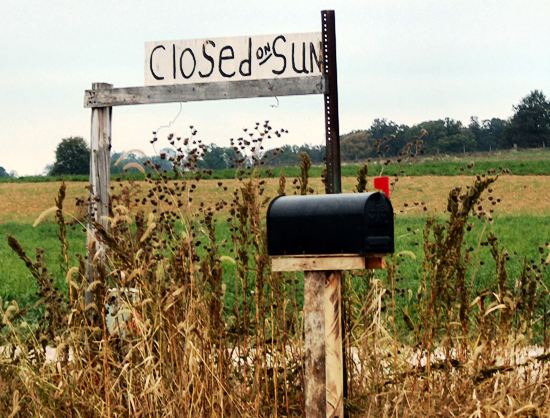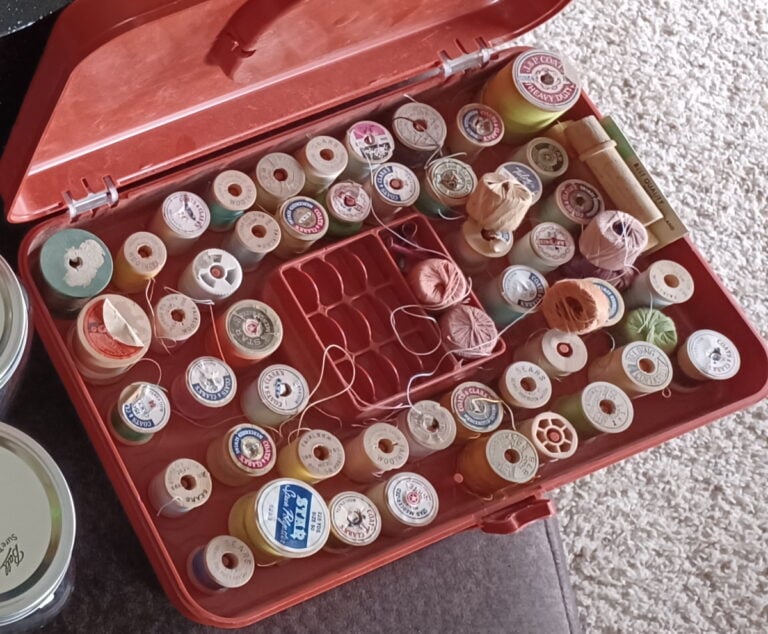A Closer Look At Amish-Owned Pioneer Equipment (Wayne County, Ohio)
Pioneer Equipment is a longstanding Amish manufacturer which makes horse-drawn equipment, wagons and other vehicles, and related implements.
The company got its start in the mid-1970s when Wayne Wengerd and his father Henry tested out a plow prototype on a back field of their land, a response to the growing lack of horse-drawn equipment available to Plain farmers.
Amish people had for years used the horse-drawn tools discarded as the rest of the country adopted the tractor and mechanical farming through the early and mid-20th century.
But over time the supply of such equipment began running out, opening the door for a shop like Pioneer.

Eight of Wayne’s children now work in the business, located in Wayne County, Ohio, including his eldest son Daniel who serves as president/CEO.
When I first met Wayne and his family in the late 2000s, it was a 30-something-employee-size business, on the larger side for an Amish company (though in some cases they can get much larger).
It seems to have remained a similar size in that regard – described as 40 employees in size in a profile at thefabricator.com.
But that doesn’t mean it hasn’t grown. The article examines changes made in their operations that improved their production from a lean manufacturing perspective.
The improvements were so successful that they even started a subsidiary company which sells the company’s patented workflow solutions to other businesses.
The shop remains off the grid, relying on a 400-horsepower natural gas generator which powers everything from lighting to computerized welders.
Here’s a photo of Pioneer Equipment from the company catalog. Note how the business dwarfs the home behind it:

I’ve always been impressed by this business and the people behind it. The article is an interesting read, though it is from a trade publication, so there is jargon and a focus on industry topics in the article.
Here is one section and quote that stood out to me however, especially as it pertains to the Amish approach to work and education in its many forms:
The company works with outside banks and accounting firms, of course. On occasion it collaborates with outside engineers. And it recently hired a marketing professional who isn’t Amish. But like everyone else in the plain community, not one Amish worker at Pioneer attended school beyond eighth grade. Many started working when they were just 13, helping and learning the ways of the shop before working with large equipment at 18. As managers explained, Amish education doesn’t stop when they’re hired. In many ways the education never stops.
Eddie Wengerd, general manager (and Steven’s older brother), said it best: “Instead of learning a trade, as a culture, we learn how to learn. Instead of just learning to weld, I can learn how to learn how to weld, or to be an IT person, or a shipping manager. I’ve learned how to learn. Then the door swings wide open.”
To add one more detail, Pioneer’s IT director is an Amish-raised 18-year-old adept at writing computer code and who has developed the custom server structure tailored to the shop.
Ironically the picture that emerges in this article is of a highly sophisticated, innovative, and efficient business making equipment and vehicles of “another era” – to supply a market including both Amish farmers and non-Amish horse enthusiasts around the globe.
Read it in full here.





How to learn
“I’ve learned how to learn” Wow! What a profound Idea. It reminds me of something I told my students; “I can teach you but I can’t learn you. You have to do the learning.”
Well said! Open-mindedness + figuring out how + effort.
Qualifications in one field do not equate to having the end word in another
While I cannot help but be impressed by, and can’t give anything but admiration, for the general story of Pioneer Equipment, I can however say that the influence from the very top management there is having an undue negative effect on an aspect of Amish road safety. Having first been tipped off to this discrepancy by our local dealer in Holmes County for Tri-Color Triangles, then, hearing reinforcement both on the phone and later in person (at Illinois Horse Progress Days), I feel compelled to comment here on this “difference of opinion.
An expertise in horse farming equipment and past experience with other aspects of Ohio Amish Safety Committees does not necessarily translate into expertise in the specific area that our company specializes in. Referencing the “Fabricator” article, it said there that both “the consultant came from outside” plus “people started doing things that we just never would have thought of” and lastly “rather than reinventing the wheel, we’re very big on partnerships and collaborations.”
In light of this on-the-record broad-mindedness, I (along with our first Holmes Co. dealer) found it unhelpful and close-minded that the very top management at Pioneer has poo-pooed the possible validity of a proven, award-winning safety product that is based upon psychological and optical principles that most people don’t know much about, stating instead that the upgrading from conventional SMV emblems (legacy triangles) to our T-C T “would make an Amish buggy no longer be recognizable as a buggy to drivers approaching it.”
Sentiments such as that unfortunately reflect* (*no pun intended) a lack of familiarity or expertise with the specifics of the psychological aspects of how colors, shapes, visual associations and the most modern highway signage materials interact with motorist on elementary levels… not merely knee-jerk colloquial assumptions.
We invite readers here to avail themselves at delving into the concept of “visual psychographics,” the history of fluorescence and various other informative and educational items found upon our website in order to consider things that they just never would have thought of by themselves… this, in the interest of especially not being a roadblock to road safety progress because of preexisting expertise in non-applicable areas unrelated to the benefits of this one new item; this being known as an “argument from authority.”
To wit: “In order to be fallacious, the argument must appeal to, and treat as authoritative, (certain) people who lack relevant qualifications, or whose qualification is in an irrelevant field, or a field that is irrelevant to the argument at hand.” (see rationalwiki.org/wiki/Argument_from_authority for further information)
Please let science, psychology and a proven track record in prior Amish sales trump any notions and guesses, however well intentioned, ventured in this area so deserving of being taken seriously, at least for the masses of vulnerable Amish on the road in Holmes County. Best wishes to all there on the outcome of this disagreement (and with minimal [and hopefully no] accidents while this “disagreement” becomes resolved.
PS, website name for Tri-Color Triangle referenced in above comment
For readers interested in finding out more about the Tri-Color Triangle, our website is:
http://www.safety.graphics (no “dot.com” needed).
See for yourselves from the many pictures, videos and extensive information there if you think that this upgrade to the 60+ year old SMV emblem is a logical, valuable innovation, not just for the Amish and other horse-and-buggy plain people but for farmers and all other slow road equipment also.